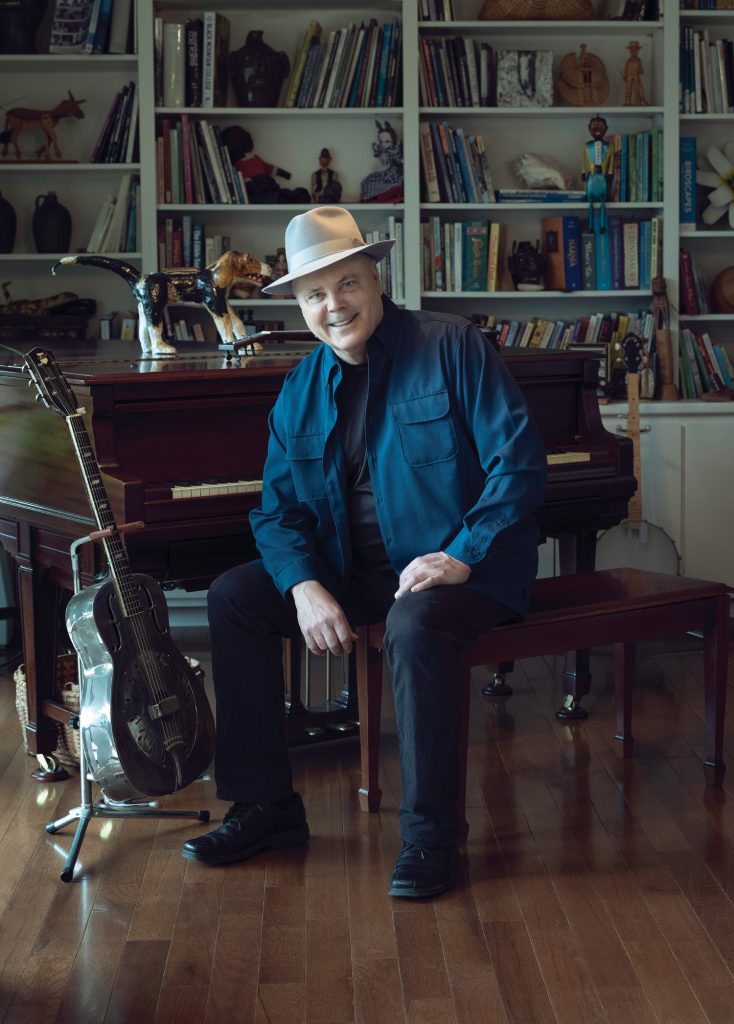
You already knew David Holt did music. You might have known he also takes pictures. Now you know he creates mixed-media assemblage art, too.
Portrait by Amos Moses
David Holt does a few different things. The prolific musician (he can play 15 instruments), singer, storyteller, historian, and long-time host of Folkways on PBS is also a photographer. For decades, he shot black-and-white pictures of the iconic North Carolina musicians he encountered in his career. His portraits of the late Doc Watson — with whom he won a Grammy award, in 2002, for their album Legacy — Etta Baker, Earl Scruggs, Tommy Jarrell, and others were collected in an exhibit, Mentors and Heroes, that toured the state. A few years ago, Holt was inspired to expand his visual artwork into mixed-media painting.
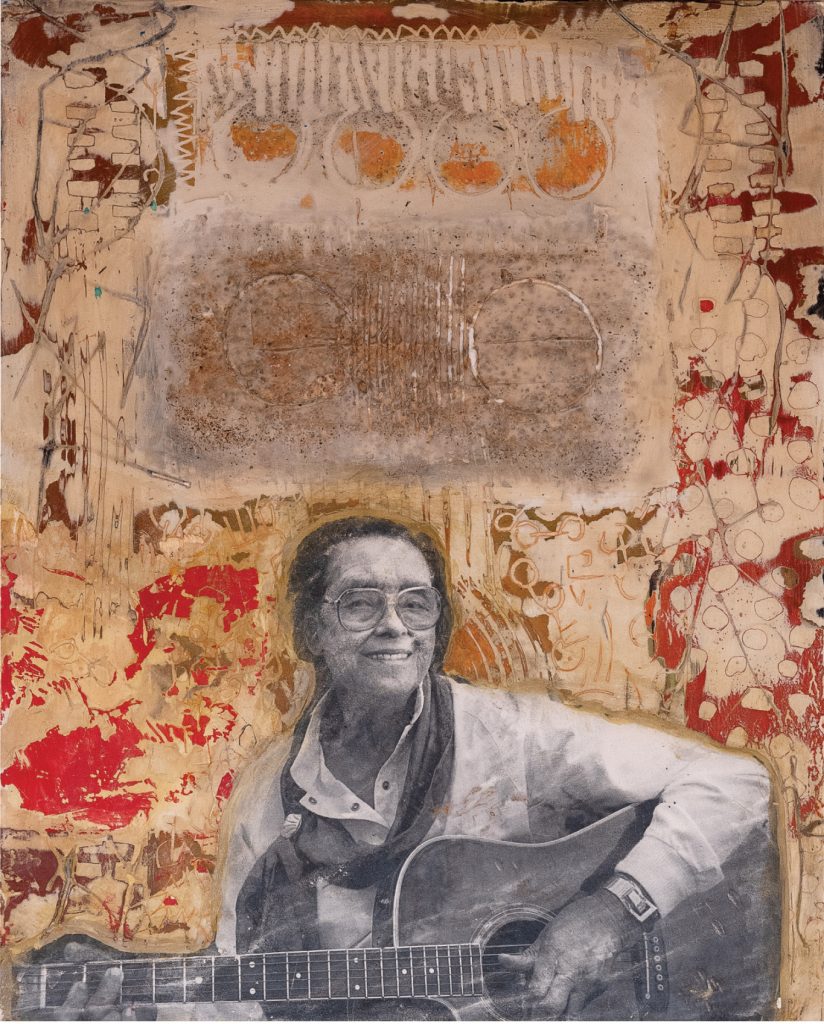
How’d you go from photography to painting?
I wanted to take the photos to another level, and give them more personal expression. And I’ve always loved old posters and signs on walls, peeling paint, things that show layers of time. That is kind of my inspiration.
The look of aging and history?
Yeah, but this allows me to make “new” older stuff. I can create the layers in a shorter time than Mother Nature does.
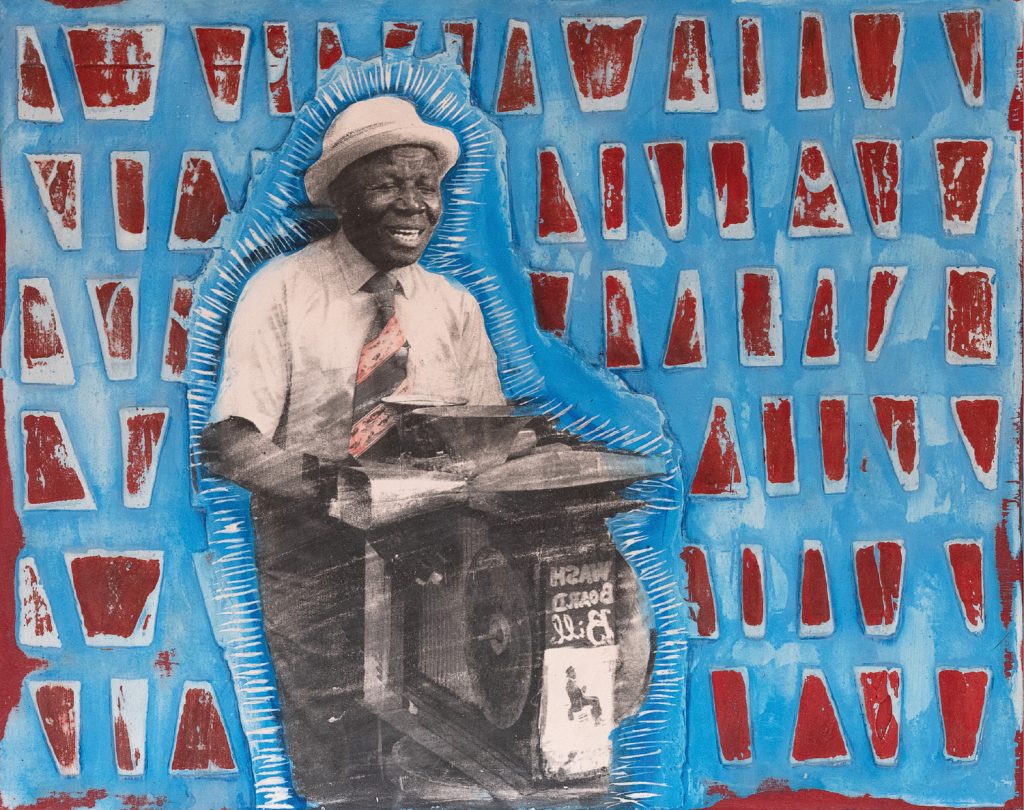
Like how old songs evoke bygone days … so how’d you learn to paint?
I went to the Penland School [of Craft] and took classes from an artist named Patricia Wheeler, from Maine. She came up with this method where you use drywall materials. That’s what got me going. You start with a panel and cover it with drywall mud. Then you can press into that material and get deep textures.
It sounds physical.
It’s very physical. In college I was a sculptor, and this has some sculptural qualities to it. And it makes a big mess, which I love. Although the pictures aren’t messy — just the making of them. You can distress the painting by scraping it or hitting it to add randomness and a dynamic energy. I bust paint off, whack at it, scratch through layers of color.
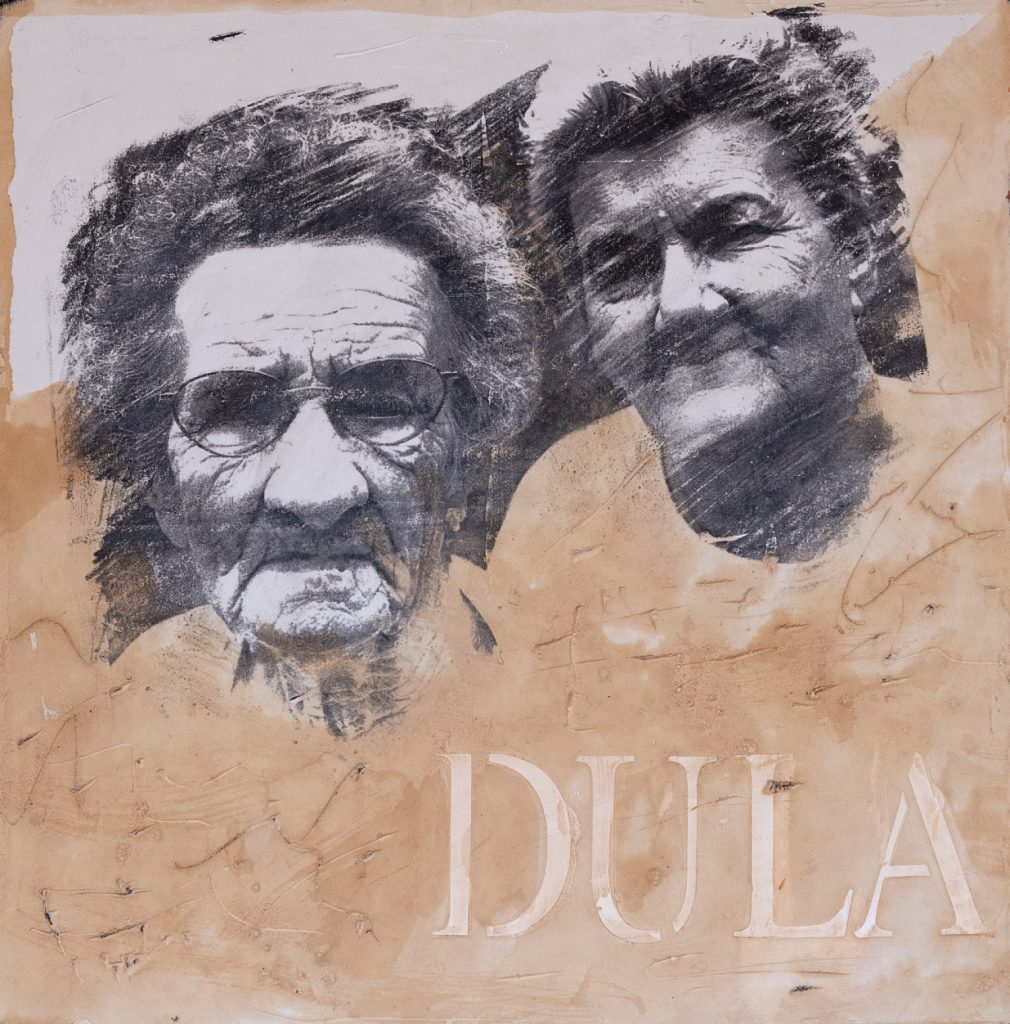
What kinds of tools do you use?
Typical drywall knives and tools. I’m also always looking out for things with cool surfaces to push into the mud and make a mark.
Your work has an untamed quality to it.
Yeah, it’s not a logical process. I have to get into a zone, a state of being. You get a flow going and have to stay with it. That’s the joy of it for me.

Do you plot out compositions ahead of time?
No, you can’t map it out. You have to just see what happens and react to that. It’s very gutsy and organic, like helping nature take its course, with very earthy, natural shapes and gritty funkiness.
How do you add photographic images to the surface?
There’s a process where you can transfer the ink from a Xerox copy by applying a liquid and rubbing on the photocopy. I rub it with a whale bone. The ink releases from the paper and sticks to the drywall mud and leaves the picture.
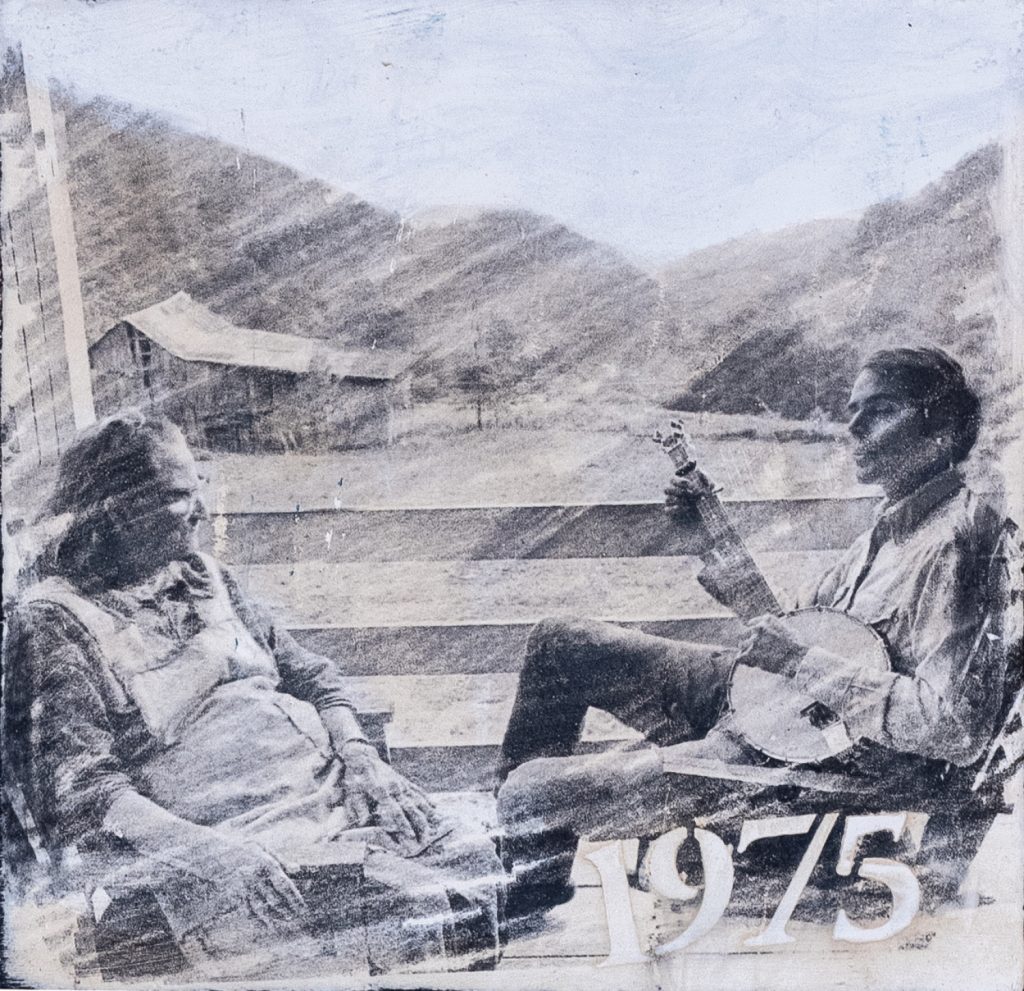
What’s the creative crossover between your music and your painting?
There is a rhythm in music and a rhythm to making these pieces — and a rhythm when you look at them. I like the rhythm to be really strong and steady.
It sounds like you have a lot of fun painting.
I do, it is so much fun. For me it’s super therapeutic.
You enjoy the process as much as the finished result?
More so.
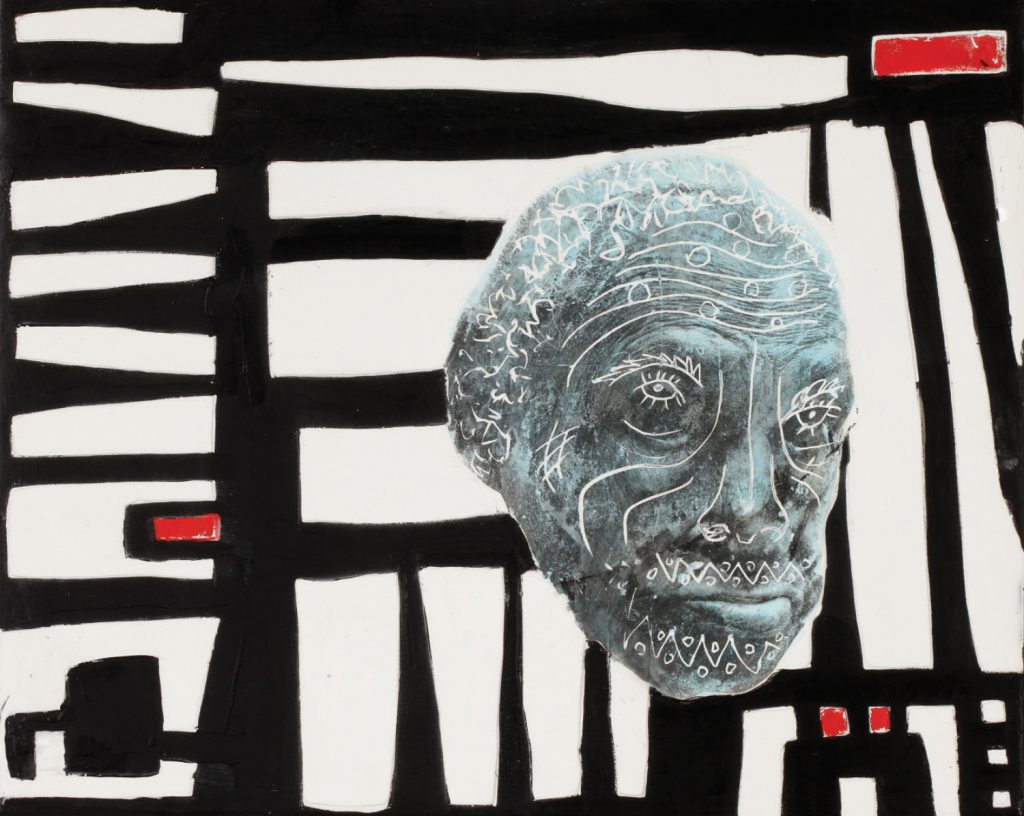
David Holt, Fairview. For more information, see davidholt.com.
Hi from Mary Wier in Chattanooga. I saw the episode about the guitarmaker and the kinds of wood that made sounds. I love that My jobs station kindly gave your name and show title. I can’t find your show 3 weeks out. Can you advise where to look for it Thanks so much. I am studying healing thru music and sound